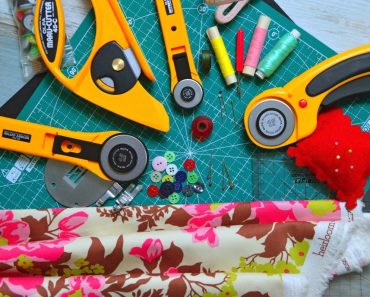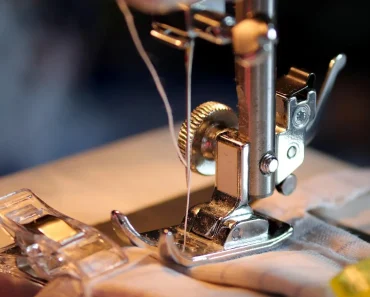Most people when they hear the phrase “sewing kit” think of those tiny travel sewing kits available for around $10 at a discount or drug store. If you have to mend a tear in a hurry, these kits include everything you’ll need.
In a basic kit, you’ll receive a few needles, a tiny pair of scissors, and a few small spools of thread in neutral hues like black, white, and dark blue. For the most part, this is as much of a hand sewing kit as many people will ever require.
However, if you intend to sew seriously, you’ll need a much more comprehensive sewing kit. What’s the reason? A decent sewing kit can act like a great carpenter’s toolbox. There is practically no limit to what you may accomplish with the appropriate instruments (sewing materials), especially hand stitching.

Why Do You Need a Hand Sewing Kit?
When you buy a sewing kit, you probably already own a sewing machine, and you might be wondering why it’s necessary to make such an effort. There are several advantages, however. Even if individuals primarily use machines to sew, they will occasionally need to hand stitch due
Hand sewing kits are also portable. This means you can work on any of your sewing tasks, even if you don’t have access to a sewing machine, thanks to the versatility of these items.
Many who are skilled in sewing machines also know how to sew by hand.
So, now that you understand the significance of preparing a hand sewing kit, what should you include in yours?
The Basic Hand Sewing Kit
- Buttons and Other Fasteners: Buttons, snaps, and zippers are all useful for making fast repairs in a sewing kit.
- Fabric Marking Pens: If your sewing apparel is made up of a lot of tiny pieces, you’ll appreciate that they’re easier to count and mark. And the marking will survive the wash.
- Hand-Sewing Needles: You’ll need a variety of needles in every length and size. You don’t want to waste time hand stitching denim or corduroy with a needle that’s too tiny.
- Measuring Tape: Whatever you make, measuring is almost certainly a requirement. As a result, the measuring tape is a must-have accessory.
- A Needle Threader: Instead of attempting to thread a tiny piece of thread through the tiny eye of a needle, use a needle threader.
- A Pincushion or Magnetic Pin Holder: Pincushions are a simple, yet effective technique to keep straight pins in check. If you want a more “modern” and “high-tech” approach, consider using a magnetic pin holder instead.
- Sewing Scissors or Fabric Shears: Don’t accept the conventional pair of scissors. You’ll be making things more difficult than they have to be. Cutting fabric is easier with sewing scissors and fabric shears, which are designed specifically for that purpose.
- A Seam Ripper: Seams can be quite tenacious. While trying to remove a seam might provide you with a good work-out, if you want the task to be easier, use a seam ripper.
- Straight Pins: Straight pins with round heads are easier to work with than flat-headed straight pins.
- Thimbles: Thimbles protect your fingertips from the sharp tips of needles. They can also assist you in piercing thick, tough material.
- Thread: You can find the thread in almost any colour you want. A spool of invisible thread is also a good idea. If you need white or yellow thread but don’t have any, the invisible thread is your friend.
- A Container to Hold It All: You may keep your sewing materials in a basket, a diaper bag, or anything else that will carry them.

The Simple Solution
Putting together a hand sewing kit from the ground up may seem difficult, but ready-made kits are available. These kits, particularly the more comprehensive ones, come fully equipped with all of the materials that a sewer could require. This can provide you with a solid foundation on which to work.
Take the time to learn how to use your hand sewing kit once you’ve constructed it. There’s no doubting the speed and convenience of using a sewing machine. But there’s also no denying the pleasure that comes from hand-stitching.



